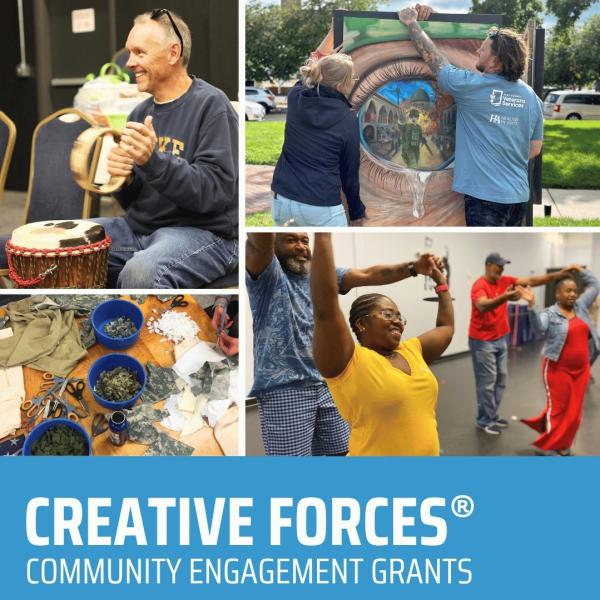Funding and Technical Assistance Available for Rural Communities

Jackson, MS—National Endowment for the Arts Director of Design and Creative Placemaking Jennifer Hughes announced today the opening of the 2019 Citizens’ Institute on Rural Design™ (CIRD) with a call for applications to the program. Since 1991, this National Endowment for the Arts program has offered funding and technical assistance to communities with populations of 50,000 or less to address local challenges related to economic vitality and quality of life through design solutions. The deadline for applications is July 22, 2019.
Hughes’ announcement took place at the Rural Generation Summit in Jackson, Mississippi, a gathering of national arts and cultural leaders working in rural places that is funded in part by the Arts Endowment. The summit support and CIRD announcement are two examples of the Arts Endowment’s commitment to advancing the arts in rural communities. Rural arts resources are available here.
“The National Endowment for the Arts has a long history of funding arts and cultural activities in rural communities,” said Arts Endowment Acting Chairman Mary Anne Carter. “This is especially important considering that private dollars routinely bypass rural America. The National Endowment for the Arts, with its state and regional partners, provide funding in 25 percent of the countries across the nation that the top 1,000 private foundations do not.”
New this year to the CIRD program is a peer learning component for rural leaders that features training in design, planning, community engagement, and facilitation techniques as well as support in navigating funding opportunities. The Arts Endowment anticipates funding three local design workshops and up to 20 additional communities in the peer learning program.
The Arts Endowment welcomes the Housing Assistance Council (HAC) and buildingcommunityWORKSHOP ([bc]) as its new partners in CIRD and thanks Project for Public Spaces and the Orton Family Foundation for their six-year management of the program.
David Lipsetz, CEO at the Housing Assistance Council said, “Here at the Housing Assistance Council, we’ve been working in community development for decades and we are thrilled to be bridging the gap between that and rural design. CIRD is an amazing opportunity for rural communities across the nation, and we are so eager to see the breadth of ideas, leadership, and creativity that they will bring forward.”
Examples of past CIRD projects include:
- In Greenville, Mississippi (population 34,400) the workshop challenge was to engage the community and local leaders in visioning for improvements to the central business district by restoring vacant properties and adding housing and commercial spaces. Discussions in the Delta region tend to center on how to attract industry or tourism (especially with the Delta Hot Tamale Festival and the Delta Blues & Heritage Festival), but rarely on how to attract and retain residents. Conversations also focused on equitable development with local communities of color and on cultivating local entrepreneurship.
- In Las Vegas, New Mexico (population: 13,753) the workshop challenge was to develop a revitalization plan for the local Gallinas River, a neglected but invaluable natural resource. The workshop produced design concepts for Gallinas River Park, with short term outcomes including building a straw bale amphitheater to test out permanent amphitheater locations and creating interpretive signs designed by high school students.
- In Valentine, Nebraska (population: 2,800) the workshop challenge was how to design a seven-block stretch of Main St./Highway 83 to balance pedestrian activity and truck traffic and to develop strong relationships with the Nebraska Department of Transportation (NDOT). The community was very engaged in the planning process and NDOT noted that the process could become a model for state-led Main Street projects throughout Nebraska.
Contact
Victoria Hutter, hutterv@arts.gov, 202-682-5692




